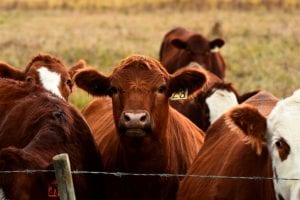During a recent California State Board of Food and Agriculture meeting, Steve Arnold, president of the California Cattlemen’s Association (CCA), shared some of the successes and struggles of the California beef industry this year. He highlighted the fact that overall, the industry has experienced improvements in genetics, bountiful grazing land from two wet winters, and improvement in technology regarding video marketing at sales yards. Only a few regulatory issues are inhibiting the ranchers.
The loss of stock and sales yards has become prominent, as Arnold says, “We have to drive two and a half hours” to the nearest sales yard, as they are being demolished and paved over for residential purposes.
The biggest challenge faced by cattlemen is the need for fire insurance. Arnold said that many ranchers’ fire insurance is being canceled, creating other challenges because lending institutions require fire insurance to support the industry.
Another issue experienced in the California beef industry is transportation. New proposals enforcing more electric vehicle fleets are posing a threat to the livelihood of the industry. Arnold says, “That is never going to work because you can’t get enough batteries in a truck to get it over the top of Highway 80 going east.” Furthermore, “almost all our industry is absolutely dependent on trucking,” he said.
With regard to groundwater regulations, cattlemen are finding themselves beholden to sustainability agency fees for grazing land. “They’re de minimis extractors in trying to water their cattle,” Arnold said. “Those fees can go pretty high because they’re controlling a pretty big amount of acreage.” The CCA is involved with a lawsuit to “try to get adjudication on whether that’s legal to charge everybody or only the extractors,” Arnold explained, to defend the ranchers who use smaller amounts of groundwater than their counterparts in the basin.
Arnold also shared that a troublesome aspect of wildlife conservation efforts and elk restoration in the state has brought a new predator to grazing lands. Wolves pose a threat, especially to calves and vulnerable adult cattle. Because wolves are under both a federal and state protective designation, Arnold believes it is unlikely that depredation techniques will be granted.
“The wolf is a different problem. We had $3 million in the budget in 2021 to pay for depredation, presence, and fladry,” he said. With this year’s budget deficit, the cattle industry was only granted $600,000 to mitigate wolf attacks on herds.
Despite these challenges, Arnold said that the California Cattle Council has proved to be a successful endeavor in voicing the industry’s concerns to the state government. “As an industry (both dairy and beef), we agreed to give that dollar,” he said. “We face a lot of regulatory problems, but we have three people out of the five who are dedicated to regulatory issues on the council.”
Contributing Author:
Lauren McEwen
AgNet West Intern











